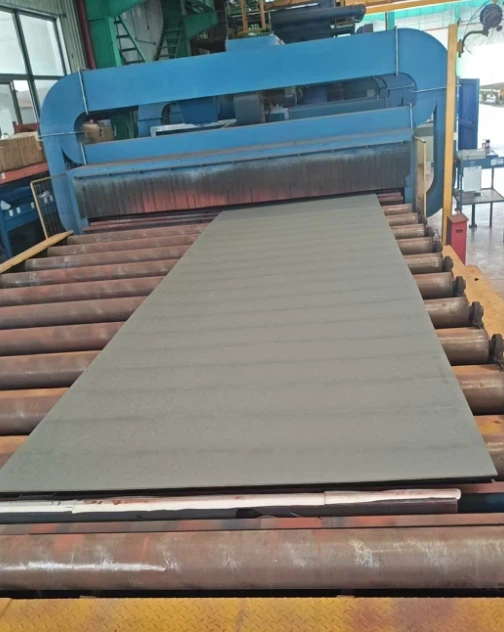Pressure Vessel Use:
It's specifically designed for the fabrication of pressure vessels, which are containers designed to hold gases or liquids at high pressure.
Welded Construction:
The specification is for plates intended for welded pressure vessels, indicating its suitability for joining through welding.
High-Temperature Applications:
The nickel content makes it well-suited for applications involving elevated temperatures.
Common Applications:
It's frequently used in the oil, gas, and chemical industries, where pressure vessels are essential for processing and storage.
1. What is ASTM A203 Grade A? What is its main application?
Material type: A203 Grade A is a nickel alloy low-temperature pressure vessel steel plate designed for low-temperature environments (-45°C to -101°C).
Main applications: Used in the manufacture of liquefied natural gas (LNG) storage tanks, cryogenic chemical equipment, refrigeration systems, cryogenic pipelines and other occasions that require brittle fracture resistance.
2. What are the characteristics of the chemical composition of ASTM A203 Grade A?
Its alloy composition is as follows:
Element Grade A Requirements Grade B (Comparison) Grade D (Comparison)
Nickel (Ni) 2.1–2.5% 3.0–3.5% 3.0–3.5%
Carbon (C) ≤0.17% ≤0.17% ≤0.17%
Manganese (Mn) 0.40–0.70% 0.40–0.70% 0.40–0.70%
Features: Lower nickel content (2.1–2.5%), lower cost than Grade B/D, but still provides good low temperature toughness.
3. What are the mechanical property requirements of ASTM A203 Grade A?
Tensile strength: ≥ 450 MPa (65 ksi). Yield strength: ≥ 260 MPa (38 ksi).
Elongation (50mm gauge length): ≥ 23% (high elongation ensures low temperature plasticity).
Impact toughness: Need to pass the Charpy V-notch test, with a minimum impact energy of 20 J (15 ft-lbf) at -101°C (-150°F).
4. Why is ASTM A203 Grade A suitable for low-temperature applications? What is its metallurgical principle?
Role of nickel: Nickel expands the austenite phase, refines the grains, reduces the ductile-brittle transition temperature , and improves low-temperature toughness
Purity control: Low sulfur (S≤0.025%) and low phosphorus (P≤0.025%) reduce impurity segregation and avoid low-temperature embrittlement.
Heat treatment: Usually delivered in normalized state to optimize the microstructure (ferrite + a small amount of pearlite).
5. What should be paid attention to when welding and processing ASTM A203 Grade A?
Welding process:
It is recommended to use low-hydrogen welding materials.
Preheating temperature: 100–150°C.
Post-weld heat treatment:
Not mandatory, but 595–635°C annealing is recommended for thick plates (>25mm) to relieve stress.
Processability:
The deformation rate needs to be controlled during cold forming to avoid excessive work hardening.
Hot Tags: astm a203 grade a pressure vessel steel plate, China astm a203 grade a pressure vessel steel plate manufacturers, suppliers, factory, C15 Carbon Steel Round Bar, Hot Rolled Boiler Pressure Vessel Plate, Pressure Vessel Steel










